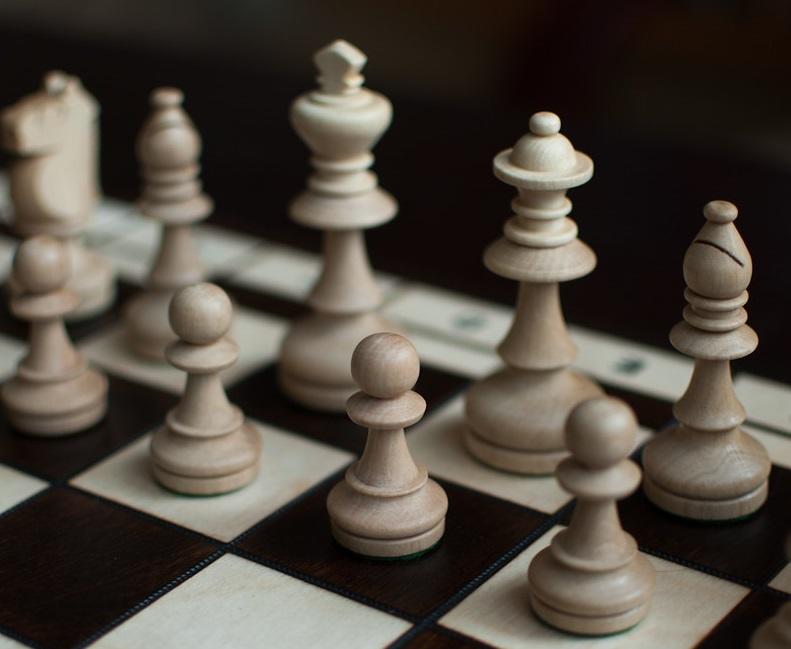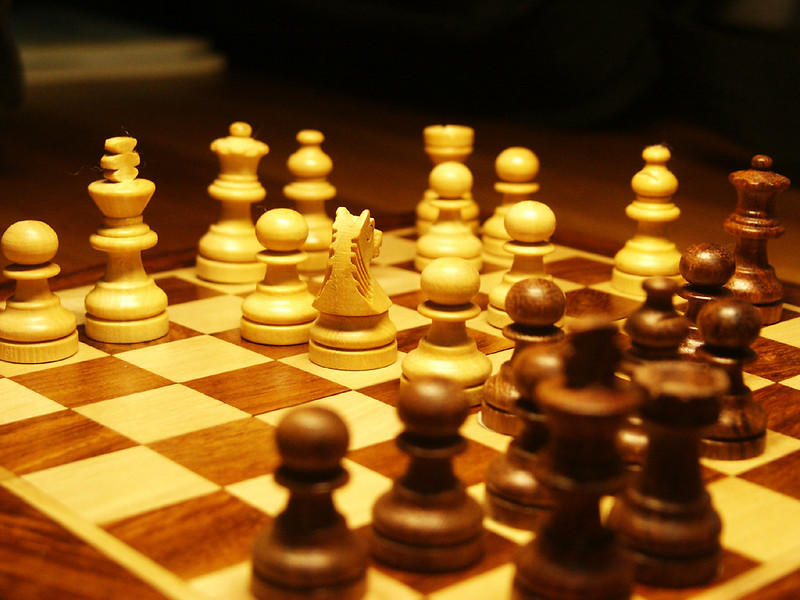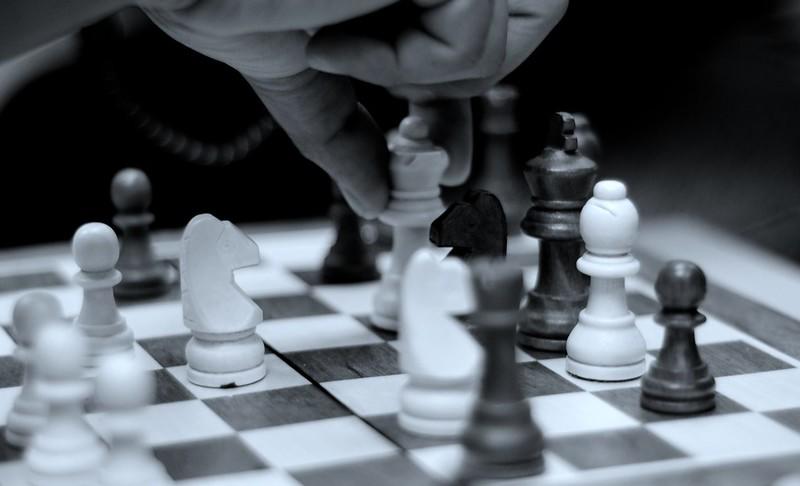No, this article about the Queen’s Gambit is not about the popular Netflix series, but it is about one of the oldest and most loved chess openings in history. While some argue that the Queen’s Gambit move is not strictly a gambit as it does not allow Black to keep White’s sacrificed pawn without putting itself at risk, others believe that it is a gambit because it results in temporary loss to gain an advantage.
In this article, we unpack the Queen’s Gambit meaning as well as the pros and cons of what it can do for your chess game.

Why is it Called the Queen’s Gambit Move?
Most people tend to focus on the word gambit and tend to forget why the queen, which is the most valuable piece on the board, is invoked.

Unlike the King’s Gambit which is easy to explain, we should think about the origins of the game. It was intended to replicate how two armies face each other on a battlefield to fight until the death for the glory and honour of the king. Of course, the king’s pawn makes the first move which also explains it.
By contrast, queens did not often venture into battle, however, in the Queen’s Gambit move, the queen does exactly that. into battle and, should any battle be at hand, queens were hardly the primary concern.
The Queen's Gambit is indeed a mirror for the King's Gambit. Instead of it playing out kingside, the initial action takes place queenside which is the most likely reason that it is called the Queen’s Gambit opening.
The matter of the Netflix opening is another matter altogether. In actual fact, Beth Harmon’s most frequent opening response was the Sicilian Defence, although she sometimes used the Queen’s Gambit move too. The title was likely a play on words that inferred that Beth was the queen of chess and that in her life she made many sacrifices to gain her ultimate title
A History of the Queen’s Gambit Move
The Queen’s Gambit Meaning was first recorded in the Göttingen manuscript which is a 33-page Latin tome dating back to 1490. While it only details the Queen’s Gambit Accepted, the reason is probably that the game’s extensive theory was yet to be developed.
Also called the Aleppo Gambit, the Queen’s Gambit opening honours Phillip Stamma of Aleppo who later moved to France. Stamma was a chess master who wrote the book the Noble Game of Chess in 1737 in which he not only validated but promoted the Queen’s Gambit opening. He also provided the algebraic notation to the chess world too. But for all the praise and detail that Stamma gave to the Queen’s Gambit meaning, it was not until a century later during the 1873 Vienna Chess Tournament that the opening received greater acceptance.
It was at the beginning of the 20th Century when a greater understanding of chess theory developed that there was a greater appreciation for positional play. During the 1920s, this gambit became even more famous and was responsible for 32 out of 34 chess games that were played during the 1927 World Championship games. Soon after, when the world economy, stability and peace were compromised by the Second World War, nobody thought about chess. When tournaments resumed, most players had moved on from symmetrical openings and this including the Queen’s Gambit opening.
The Queen’s gambit opening never regained its pre-war popularity, however, it is still often played in modern chess and along with moves like the Ruy Lopez opening, it is one of the oldest openings in history.


How to Open with the Queen's Gambit
As already mentioned above, the Queen's Gambit mirrors its less-often counterpart, the King’s Gambit 1. d4 d5 2. c4.
When advancing the c-file pawn, White will provoke a possible trade-off: its c-file for one that is closer to the centre of the board, Black’s d-file. If Black can capture the c4 (2. c4 dxc4), then the Gambit will have been considered as accepted. Keep reading to see how that is played out.
Queen's Gambit Accepted
When Black accepts the gambit, it can develop other pieces instead of trying to retain its foothold in the centre. Obviously, Black can choose from many moves, but all of them would be in the category of QGD (Queen's Gambit Declined). We’ll look at those scenarios further down, but what happens if Black accepts the 1. d4 d5 2. c4 dxc4 gambit?
White will strive to control the centre of the board and manage attacks on black from there. And to further strengthen its centre position it will move its kingside knight to f3. Black answers by mirroring the move with its kingside knight landing up on square f6. Another mirror move of 3. e3 e6, means that White's kingside bishop will recapture the gambit's initial pawn. The entire sequence in algebraic notation looks like this:
- d4 d5 2. c4 dxc4 3. Nf3 Nf6 4. e3 e6 5 Nxd4
This is an elegant sequence where moving the e-file pawn will give the bishop just enough space to recapture White’s lost pawn with the knight out of the way. White will castle on its sixth move and Black will keep developing its pawn structure. The Queen’s Gambit Declined is the opposite of the Scotch Game which allows Black to keep its footing.
Queen's Gambit Declined
As already mentioned above, any move apart from dxc4 will fall under the 'declined' category. The best course of action to decline this gambit is for Black to advance its e-file pawn (2. ... e6). However, there are also other ways that this gambit can be declined:
- the Slav Defence noted as 2. ... c6 is a solid and tactical answer, especially when if Black plays both the c6 and e6 and becomes the Semi-Slav Defence.
- the Baltic Defence noted as 2. ... Bf5 is a risky move however when executed by a skilled chess player, it can work.
- the Marshall Defence noted as 2. ... Nf6 is equally risky. Even though this response was first pioneered by American Frank Marshall, he eventually abandoned it himself because of its complexity.
- the Albin Countergambit noted as 2. ... e5 is a response that does not usually get much play in high-level games because top players would rather not invoke it.
- the Chigorin Defence noted as 2. ... Nc6 allows Black to hold a tenable position by not encouraging typical positional sequences.
Unlike the Italian Game, if Black declines the gambit, it has many other options at its disposal. Some of these are atypical. Usually, Black will choose to play either the Orthodox Defence or the Tarrasch Defence. The Tarrasch Defence is the most invoked response in all of the top chess openings while the Orthodox Defence signifies the standard 2. ... e6 response.

Variations of Responses
If all players regardless of whether they were grandmasters and World Champions, or beginners, followed the well-known notations of the games that have been played before them, chess would be more of a memory test than a strategy.
With all of these notations, there are understandably many different responses on offer at any stage of the game. For example, when Black accepts the Queen’s Gambit it means that White’s fourth move will be to advance its Queen to a4 (4. Qa4) instead of advancing its e-file pawn. Known as the Mannheim Variation, it is not played often because Black could too easily regain its footing. Alternatively, White could advance its queenside knight to C3 and create the Two Knights variation.
This variation has benefits too. For one, White is guaranteed a strong hold on the centre, on the downside, the pitfalls are that it will not be able to reclaim its lost pawn early in the game.
The Two Knights variation usually sets up a very complex game. This is particularly the case for games that begin with the Queen's Gambit because players have a number of responses from which to choose. While some of these only show their advantage a few moves down the line, others benefit reveal their benefits immediately.
Either way, how you respond to the Queen's Gambit will depend on your level of ability and appetite for risk. One way to learn more about these other moves whether it is the French Defence or Scotch Game is to find a private chess tutor like those found on Superprof. A good tutor (who is a chess master, will be able to help you to play to your strengths and help you to devise strategic responses to suit your style of playing.















